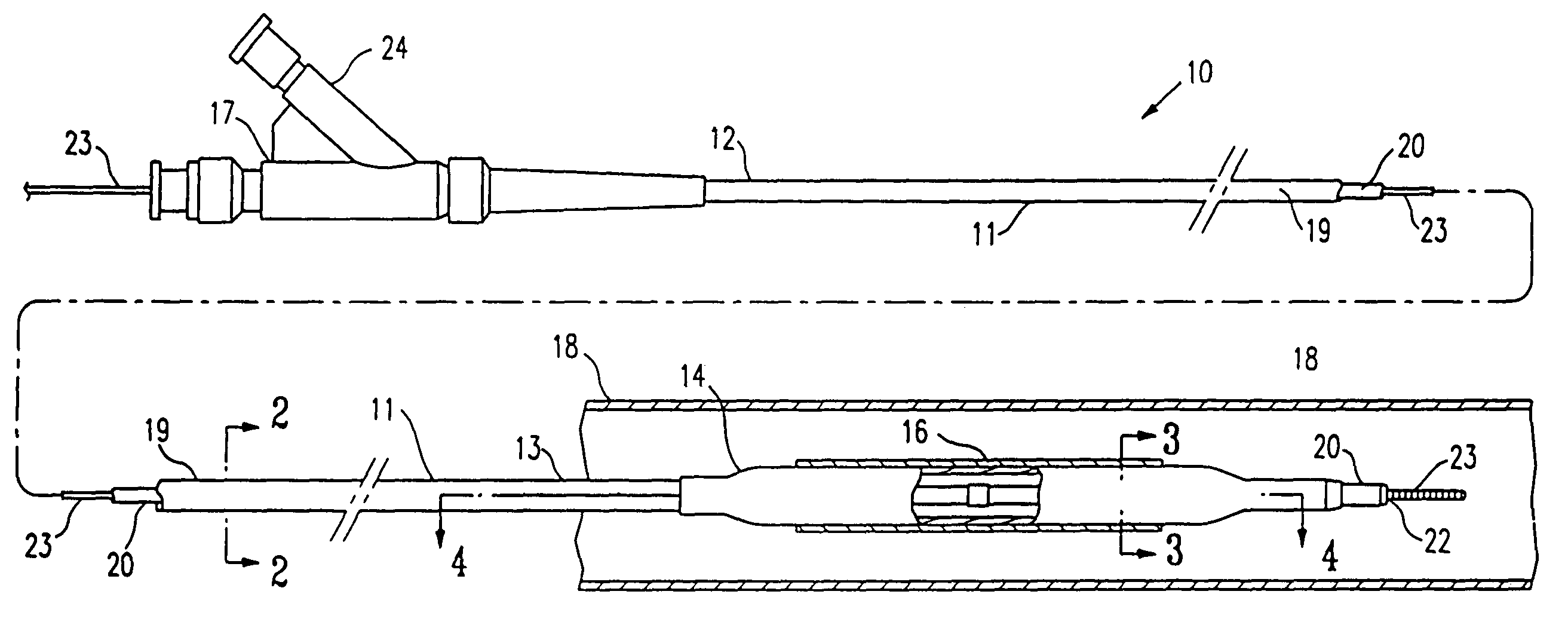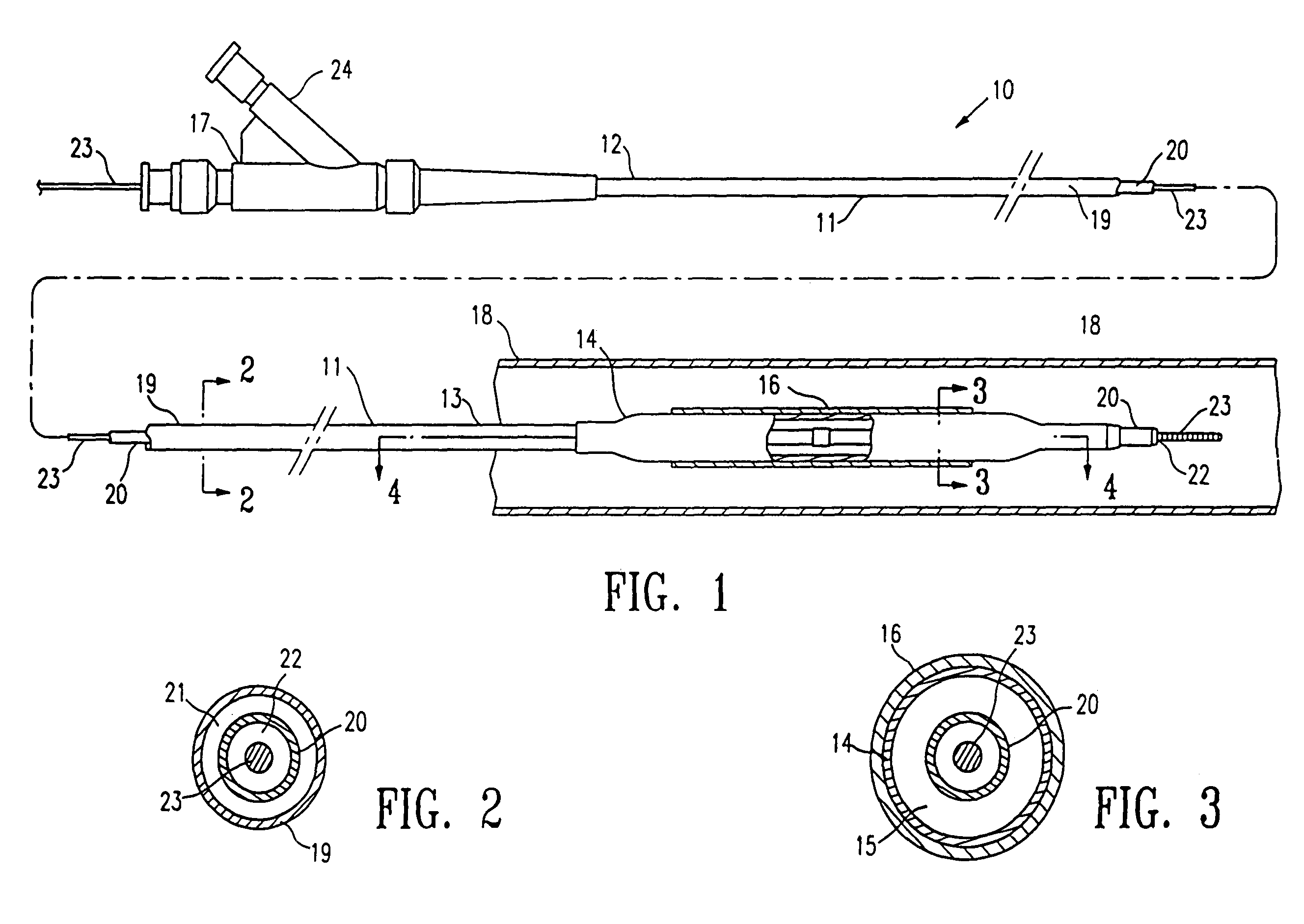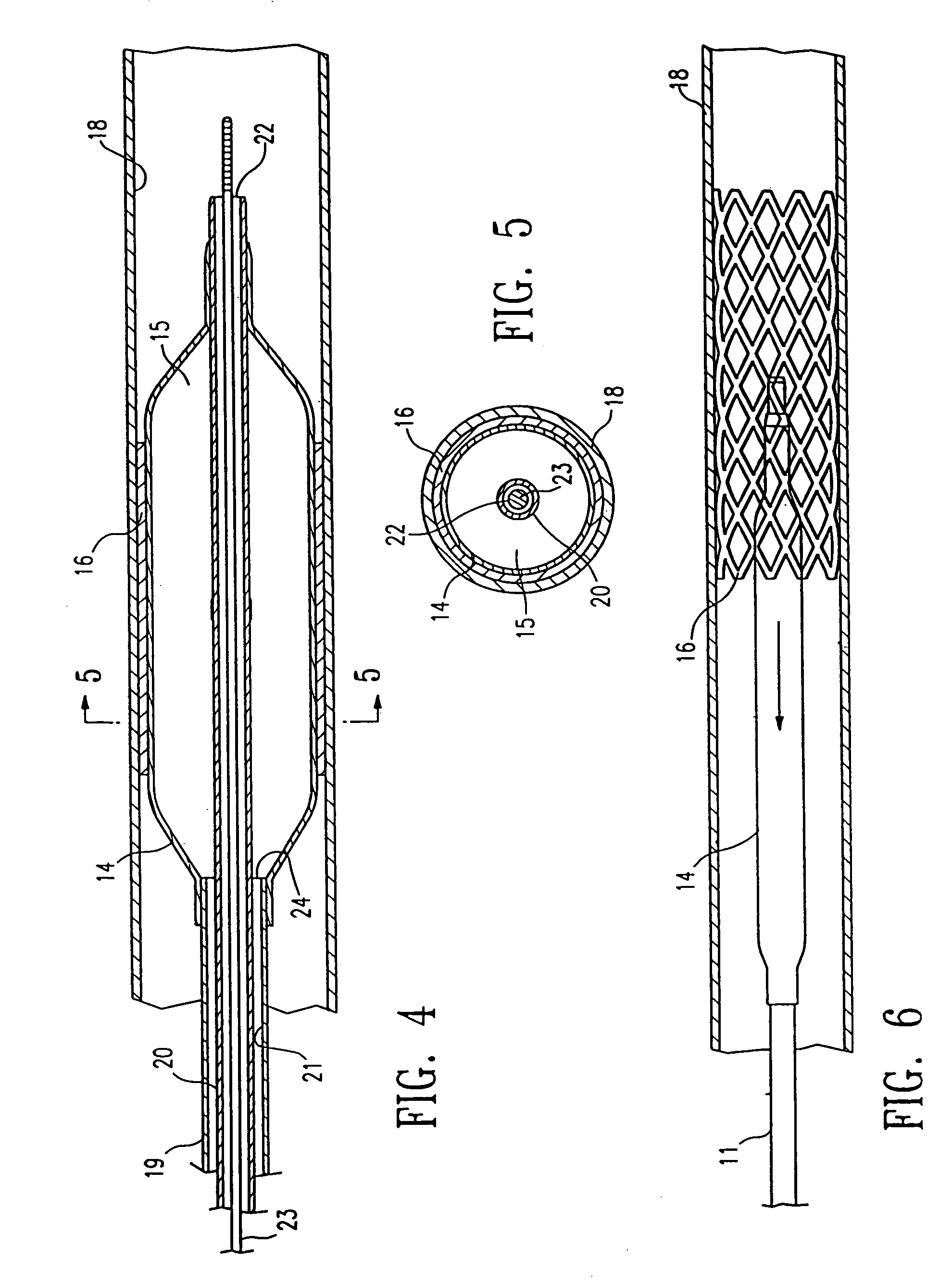Method of making a non-compliant balloon for a catheter
a balloon catheter and non-compliant technology, applied in the field of balloon catheters, can solve the problems of catheter withdrawal, catheter difficulty in advancing through the patient's narrow vasculature, and trauma to the vessel wall, and achieve the effect of improving performance and improving control over the dilatation
- Summary
- Abstract
- Description
- Claims
- Application Information
AI Technical Summary
Benefits of technology
Problems solved by technology
Method used
Image
Examples
example 1
[0037]TECOTHANE 1065D was used to prepare balloon tubing having a mean ID of about 0.0195 inch (0.5 mm) and a mean OD of about 0.0355 inch (0.9 mm), and the balloon tubing was used to prepared balloons having an OD of about 2.5 mm. The mean balloon OD was about 0.110 inch (2.8 mm), and mean dual wall thickness was about 0.0015 inch (0.038 mm). The mean rupture pressure was about 238 psi, and the mean hoop strength was about 18,000 psi. Radial (OD) and axial (length) compliance measurements were made on the unrestrained balloons. The term unrestrained refers to a balloon with one end attached to an inflation medium source and the other end clamped shut, as opposed to a balloon with proximal and distal ends secured to a catheter shaft. The balloons have a substantially uniform radial expansion, as illustrated in Table 1, which lists the average balloon OD for the unruptured balloons, at a given inflation pressure, for five balloons tested. The balloons also have minimal axial growth d...
example 2
[0046]Balloons having a nominal OD of about 3.0 mm, and a length of about 20 mm were prepared using the method of the invention. PELLETHANE 75D was used to prepare balloon tubing having an ID of about 0.015 inch (0.381 mm) to about 0.0195 inch (0.495 mm), and an OD of about 0.031 inch (0.787 mm) to about 0.036 inch (914 mm). The balloon tubing was heated and stabilized at 40° C. for 16 to 24 hours prior to being blown into balloons. The balloon tubing was then placed in a balloon mold and stretched axially, and the mold was heated to a wall temperature of about 100-120° C. To expand the balloon tubing, the tubing was heated to a blow temperature of about 100° C., by displacing a heat nozzle at about 1 mm / sec to about 5 mm / sec from one end of the mold to the opposite end, while pressurizing the tubing at an expansion pressure of about 220 psi to about 270 psi. The expanded tubing was then heat treated within the mold and at the expansion pressure, at a heat treating temperature equal...
example 3
[0047]PELLETHANE 75D was used to prepare balloon tubing having an ID of about 0.017 inch (0.43 mm) and an OD of about 0.032 inch (0.8 mm), and the balloon tubing was used to prepared a balloon having a nominal OD of about 3.0 mm using the method of the invention as outlined above, in which the expanded tubing was heat treated at a temperature greater than the blowing temperature. The rupture pressure was about 300 psi to about 350 psi. Radial (OD) and axial (length) compliance measurements were made on the unrestrained balloon. The term “unrestrained” refers to a balloon with one end attached to an inflation medium source and the other end clamped shut, as opposed to a balloon with proximal and distal ends secured to a catheter shaft. The balloon has a semi-compliant radial expansion, as illustrated in Table 3, which lists the balloon OD for the unruptured balloon, at a given inflation pressure. The compliance of the balloon over a pressure range of about 30 psi to about 300 , or to...
PUM
| Property | Measurement | Unit |
|---|---|---|
| Temperature | aaaaa | aaaaa |
| Temperature | aaaaa | aaaaa |
| Time | aaaaa | aaaaa |
Abstract
Description
Claims
Application Information
 Login to View More
Login to View More - R&D
- Intellectual Property
- Life Sciences
- Materials
- Tech Scout
- Unparalleled Data Quality
- Higher Quality Content
- 60% Fewer Hallucinations
Browse by: Latest US Patents, China's latest patents, Technical Efficacy Thesaurus, Application Domain, Technology Topic, Popular Technical Reports.
© 2025 PatSnap. All rights reserved.Legal|Privacy policy|Modern Slavery Act Transparency Statement|Sitemap|About US| Contact US: help@patsnap.com



